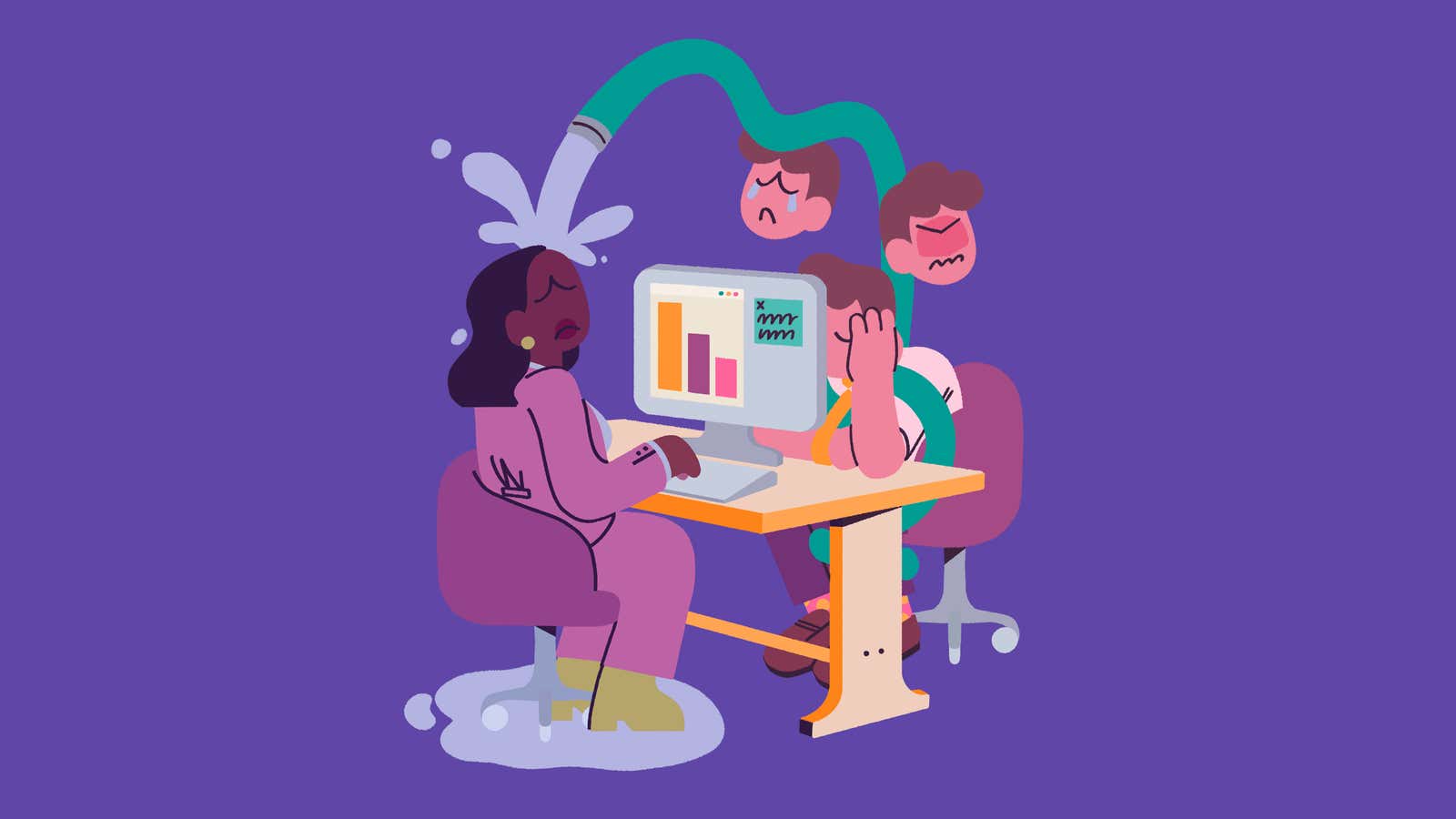In one of my favorite scenes in Willy Wonka and the Chocolate Factory—the original with Gene Wilder, you animal—Charlie’s neighborhood candy shop owner lets the kids snatch all the candy they want. It’s not the gas station penny candy I grew up hiking down the 7th Street hill for, but it’s a feel-good scene that brings me the warm fuzzies.
But besides a sugar high, what good does a fistful of candy do? For a group of internists, it was the determining factor in their work performance.
Doctors on a sugar high
In the mid-nineties, American psychologist Alice M. Isen ran an experiment to determine how our mood impacts our performance. A group of participating doctors received a list of ailments from a hypothetical patient, along with a misleading red herring: They were also told that the patient had received a lupus diagnosis from another hospital. Half received a bag of candy as a thank-you for participating before they entered the patient’s room, while half did not.
And as it turned out, the doctors who received the candy were more likely to correctly diagnose the fictitious patient’s problem. Being happy, Isen concluded, allows us access to more varied material in our memory—and help us become better, more creative problem-solvers. Isen demonstrated that positive emotions, even in small doses, improved our outcomes.
These small gestures can really add up. Observe a group of employees for even a day, and you’d see these findings repeat themselves. There’s the extra pep in the marketing specialist’s step after being publicly praised for their work, or the finance professional who finally finished the audit and can’t stop smiling.
But it works the other way, too. Look at the tenured employee who doesn’t feel like they matter. Their evidence? A 2% increase, no basic connection from their leader, and a lack of access to information that will help them do their job well. Or the employee whose work yet again got passed off as their boss’s. The way we’re treated on the job creates emotions that can either help, or hinder, our work.
We’re a long way from mastering how to channel them for ourselves and others. So exactly how do we sweeten our own emotional pot and improve our performance at work?
The sweet, sweet impact of positive emotions
It may be assumed that like begets like, but there’s an evolutionary purpose here. In another study, psychologist Barbara Fredrickson found that positive emotions also broaden our mindset—which then help build up our personal resources.
As Frederickson summarizes it, “joy sparks the urge to play, interest sparks the urge to explore, contentment sparks the urge to savor and integrate, and love sparks a recurring cycle of each of these urges within safe, close relationships.” Positive emotions widen our mindsets, while negative emotions result in a more narrow view. The impediment of closed thinking is demonstrated when scientists prime individuals to feel amusement or contentment versus anxiety or anger. When feeling positive emotions, they can think of more—and bigger—ideas.
The effect of positive vibes is biological. Positive brain chemicals like dopamine and serotonin not only make us feel good: They increase the learning centers of our brains to higher levels. “[These chemicals] help us organize new information, keep that information in the brain longer, and retrieve it faster later on,” writes Shawn Achor in The Happiness Advantage. “And they enable us to make and sustain more neural connections, which allows us to think more quickly and creatively, become more skilled at complex analysis and problem-solving, and see and invent new ways of doing things.” Sounds sweet, doesn’t it?
3 ways to own your emotions at work
To harness these good emotions—and protect all the other feels—here are three ways to put effort into the positive.
- Flag your feelings. Liz Fosselein, co-author of No Hard Feelings, suggests we point out our feelings so people don’t take them personally. A simple “I’m having a rough morning, but it’s nothing to do with you,” can go a long way. You may think it’s overkill, but more than half of employees believe their leaders’ efforts to demonstrate empathy are dishonest. The more we lead with honesty, the more we strengthen trust. When we flag our feelings, we’re able to call out when we have more to give—or not enough to go around.
- Ask your leader for support—but remove the emotion first. Not everyone has a strong foundation of trust with their manager. And even trust with your leader doesn’t translate to trust in the policies and procedures of your company. When you’re nervous about opening up about your emotions, you can approach your leader with the facts. If you’re anxious about a big project, there’s no need to mention the word anxiety if you don’t want to. Instead, you can remind your leader about the priority and ask for more time, additional resources, or whatever may help you move through your emotions and get back to work.
- Seek solace with others. Misery loves company, but so does happiness; find your people that you can vent to and a crew to celebrate with. An ERG, or employee resource group, will help you align with like-minded people. Or you can seek out safe spaces to talk about tough topics. For example, Accenture’s Building Bridges program (pdf) allows employees to create community around a topic of their choice.
More on maximizing your moments
🔢 How to not let emotions get in your way at work
🧠 Accepting your darkest emotions is the key to psychological health
🔥 4 steps to cool down when you’re heated
😌 Politeness isn’t enough; we now demand friendliness. And it’s destroying authenticity
You got The Memo
Send questions, comments, and stories of emotions at work to [email protected]. This edition of The Memo was written by Anna Oakes and edited by Gabriela Riccardi.
